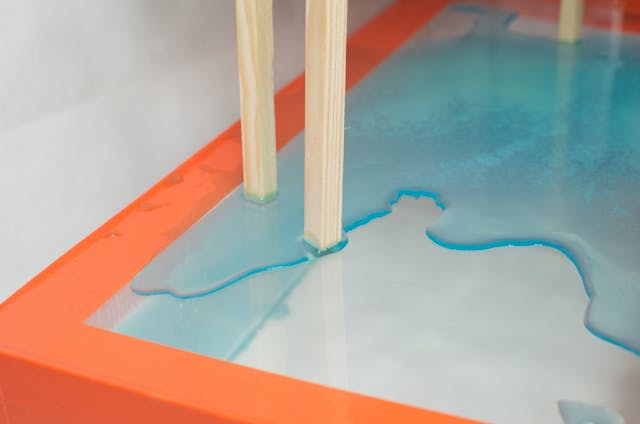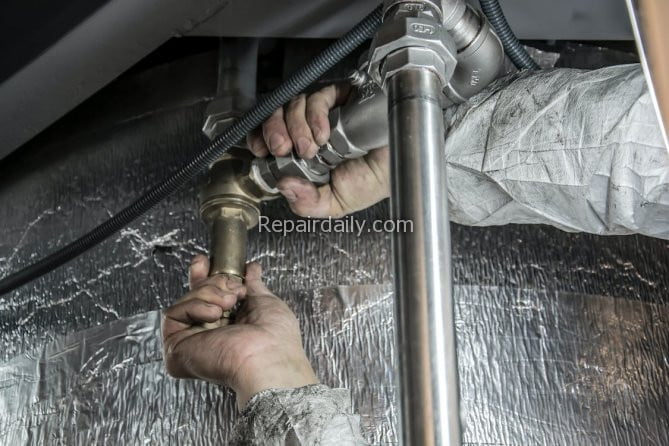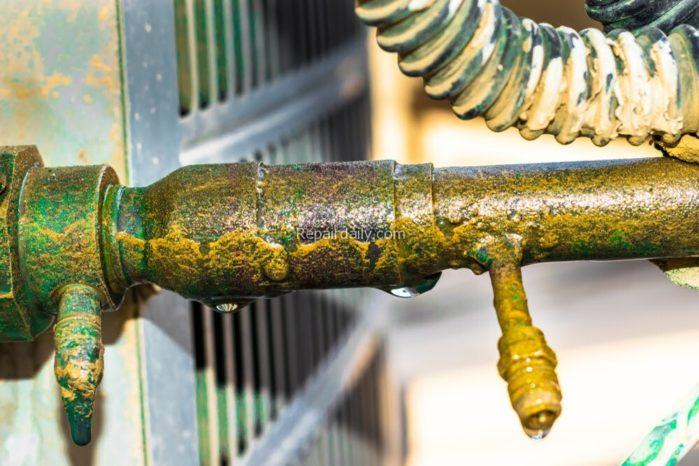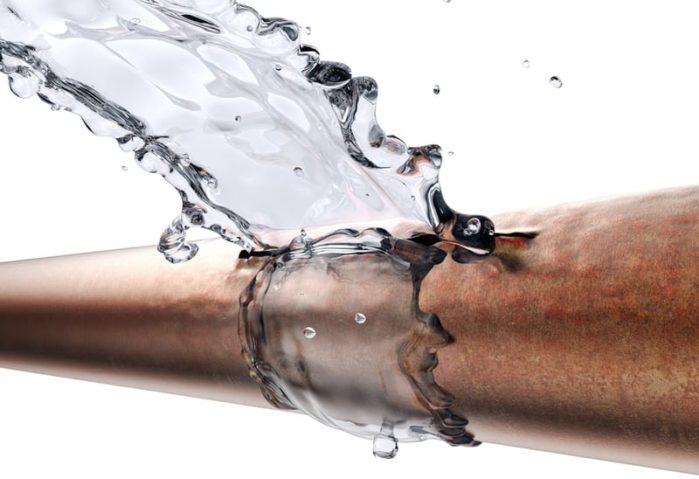
What Causes Pipes to Crack?
Pipes crack due to pressure imbalances, material fatigue, or environmental stress. Freezing water expands and ruptures pipes, while corrosion weakens metal over time. Poor installation, excessive water pressure, and shifting soil can also lead to stress fractures. Pipes don’t just “fail” overnight—they often give warning signs like unusual noises, discoloration, or slow leaks before a full-blown crack appears. While some minor leaks can be temporarily managed by homeowners, significant cracks, persistent leaks, or issues near joints and high-pressure lines usually require a professional plumber. Ignoring these warning signs can lead to major water damage, mold growth, and costly repairs.
Pipes wear out just like old shoes—stress, age, and bad conditions take their toll. Water expands when it freezes, corrosion weakens material like termites in wood, and sudden pressure changes can be as harmful to pipes as slamming on your brakes at 70 mph. Even tiny manufacturing defects can cause failures years later. The key is recognizing the warning signs before a minor issue turns into a major leak, and knowing when to call in a plumber for a permanent fix.
How Does Epoxy Work as a Temporary Fix for Cracked Pipes?
Epoxy creates a watertight seal by hardening over the crack, forming a protective barrier that can resist moderate pressure. Think of it as a liquid bandage for your pipe—flexible enough to adhere but strong enough to hold temporarily. However, it doesn’t restore the pipe’s original strength, making it a stopgap solution rather than a permanent fix.
Epoxy is like duct tape on steroids—it sticks, hardens, and holds, but it doesn’t restore the pipe’s structural integrity. It chemically bonds to the surface, creating a plug that resists water pressure—until it doesn’t. Think of it as patching a hole in a canoe—fine for a short trip, but you wouldn’t take it whitewater rafting.
What Types of Epoxy Are Best for Plumbing Repairs?

For the best results, use waterproof, high-pressure-resistant epoxy putty or liquid epoxy designed for plumbing. Two-part epoxies (resin + hardener) like J-B Weld WaterWeld or Oatey Fix-It Stick bond well to copper, PVC, and metal pipes. For larger leaks or high-temperature areas, opt for marine-grade or heat-resistant epoxies.
- For fast fixes: J-B Weld WaterWeld (sets in minutes, works underwater)
- For high-pressure pipes: Industrial-grade two-part epoxy like PC-Plumbing
- For flexibility: Marine epoxy (if the pipe shifts, regular epoxy will crack)
- For PVC pipes: A plastic-specific formula like Oatey Fix-It Stick
When Is Using Epoxy a Good Idea, and When Is It Not Enough?
Epoxy is great for small, non-pressurized leaks and emergency fixes, especially when you need time to plan a permanent repair. However, it’s not effective for pipes carrying high water pressure, hot water lines, or cracks that continue to expand. If the pipe is corroded, brittle, or leaking at a joint, epoxy will fail quickly, and full replacement is the only real solution.
- Good idea: When you need days, not years, before a permanent fix.
- Bad idea: When the crack is growing, near a fitting, or in a high-pressure pipe—because epoxy won’t stop a ticking time bomb.
How Do You Properly Apply Epoxy to a Leaking Pipe?

- Turn off the water – Epoxy won’t bond well to wet surfaces.
- Dry the area completely – Moisture weakens the bond.
- Sand the pipe lightly – A rough surface helps adhesion.
- Mix the epoxy thoroughly – Half-mixed epoxy = half-fixed pipe.
- Press it into the crack – Don’t just coat the surface; make sure it fills the crack.
- Let it cure fully – Some epoxies set in minutes, but full strength takes hours.

How Long Does an Epoxy Fix Last, and What Are the Risks?
A properly applied epoxy repair can last weeks to months, but it’s a gamble. Over time, water pressure, heat, and pipe movement can cause the seal to weaken. The biggest risk? A false sense of security. Many people delay proper repairs because the epoxy “seems fine”—until it fails catastrophically, often at the worst time.
Epoxy lasts until it doesn’t—anywhere from a week to a few months. The biggest risk is thinking it bought you time when it actually bought you a bigger problem. If the pipe fails behind a wall or under a slab, you’re looking at major damage.

Are There Better Alternatives to Epoxy for Temporary Pipe Repairs?
Yes! Pipe repair clamps, rubber pipe sleeves, and compression couplings are often stronger and more reliable than epoxy. For small leaks, self-fusing silicone tape can work wonders. If you need a longer-term solution, a push-to-connect coupling (like SharkBite) can seal a leak permanently without replacing the entire pipe.
- High-pressure leaks? A repair clamp or compression fitting.
- Flexible pipes? Self-fusing silicone tape.
- Leaking joint? Epoxy won’t help—use a push-to-connect fitting instead.
Epoxy is just one tool in the emergency toolbox, but it’s not the best for every situation.
When Should You Replace the Pipe Instead of Relying on Epoxy?
Replace the pipe if:
- The crack is large or near a joint.
- The pipe is corroded, rusted, or brittle—epoxy won’t stop future failures.
- It’s a high-pressure or hot water line (epoxy won’t last).
- You’ve patched the same pipe more than once—there’s a bigger issue at play.
If the pipe has rust, scale, or previous patch jobs, you’re wasting time with epoxy. It’s like trying to fix a leaky roof by adding more shingles instead of replacing the rotten wood underneath. If it’s a drinking water line, epoxy could leach chemicals over time—replacement is the safer bet.
Common Mistakes People Make When Using Epoxy for Plumbing Fixes
- Applying epoxy to a wet surface – It won’t stick properly.
- Not roughing up the pipe first – Smooth surfaces lead to weak bonds.
- Using the wrong epoxy – Not all are rated for high pressure or heat.
- Ignoring pipe movement – Epoxy is rigid, and flexing pipes can break the seal.
- Thinking it’s a permanent fix – Epoxy is a band-aid, not a cure.
- Using it on a live leak – Water weakens the bond.
- Forgetting pressure testing – Just because it looks dry doesn’t mean it’s strong.
- Thinking “waterproof” means “forever-proof” – Water finds weak spots over time.
- Skipping a real fix – A solid patch buys you time, but a new pipe buys you peace of mind.
Epoxy can be a lifesaver in the right circumstances, but knowing when to use it—and when to replace the pipe entirely—can save you from major headaches down the line.

